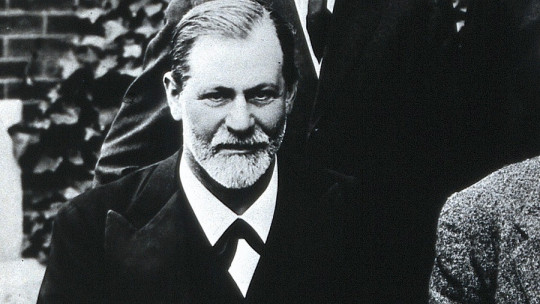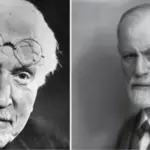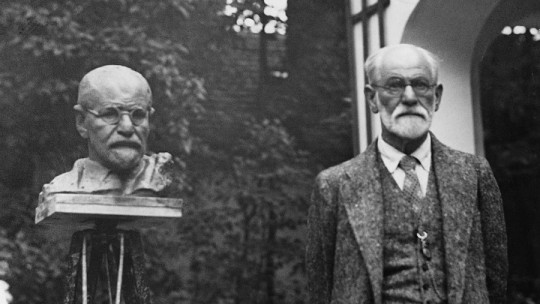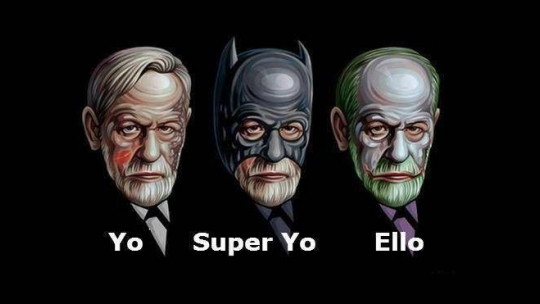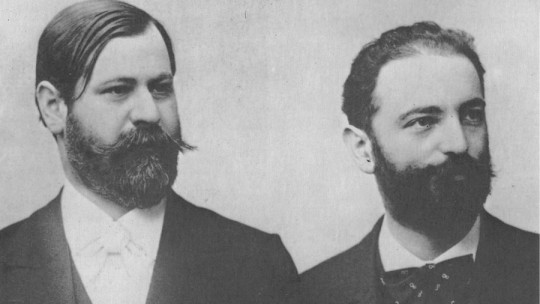
One of the defense mechanisms of the psyche, proposed by psychoanalysis, is repression, which authors such as Freud related to psychopathology and great discomfort and emotional dysfunction.
However, Freud also proposed a mechanism that, similar to repression, consists of instead of trying to silence our most basic instincts, it transforms them into something superior, socially accepted and that has a useful use for the rest of society: sublimation.
In this article we are going to talk about what sublimation is in psychoanalysis what authors of the stature of Freud, Jung and Lacan think and how it has been related to the development of humanity.
Sublimation according to psychoanalysis
The idea of what is meant by sublimation within the scope of psychoanalysis varies depending on the author, although all of them are based very solidly on the concept given by Sigmund Freud of this idea. Even those who have a critical stance with the Freudian idea of sublimation take it as an example.
Below we will look in more depth at different positions on the concept, focusing above all on the person who postulated it, Sigmund Freud, although highlighting alternative visions such as that of Lacan and Jung.
Freud’s psychoanalysis
Within the most classic psychoanalytic theory, and from the mouth of Sigmund Freud, sublimation (“Sublimierung” in German) is understood as the defense mechanism in which an impulse, whether sexual in nature or not but not socially accepted, is transformed in something that, apparently, has little to do with sexuality. In turn, the final result of the process is something that has a beneficial purpose for society as a whole, usually being a cultural, artistic, intellectual, scientific or sporting product.
The erotic energy of the human being can be expressed, but within limits. If there is an excess of this energy and it is not socially acceptable to demonstrate it, the subject has two options: either sublimation or repression. If repressed, sexual tension can lead to psychopathology according to the foundations of psychoanalysis itself.
Freud considered this mechanism to be much healthier compared to other, such as repression, denial, intellectualization or projection. According to her daughter Anna Freud in her book “The Ego and the Defense Mechanisms” (1936), sublimation constitutes the superior defense mechanism of the psyche.
It should be noted that the main difference between sublimation and repression is that in this second defense mechanism there is a derivation and channeling of energy. On the other hand, in repression, the drive is deeply repressed and is not channeled, which would give way to all the psychopathology proposed by Freud when it comes to repressing sexual energy.
This is what Freud states in his work Continuation of introductory psychoanalysis lessons (1932). Sublimation is nothing more than the modification of the purpose and change of object, adapting it to what is socially acceptable. It is a socially acceptable outlet for excess sexual energy.
Freud defended the idea that most of the higher aspects of the human species, that is, culture and its derivatives, were the result of how the human being had imposed social norms on himself that, by not allowing him to be sexually free but Not opting for repression, he had to channel sexual energy and give it a more accepted use.
Culture, civilization, humanity is nothing more than the result of suffocating sexual drives. Thus, for the Viennese psychoanalyst, culture was seen as an aspect radically contrary to nature, although this was not necessarily a bad thing. Civilization was the result of the human being having repressed his most primary instincts throughout history, through a system of values that has become more complex, increasingly penalizing sexuality.
Freud believed that sublimation was a sign of civilization’s maturity. It was a mechanism to allow people to behave in a socially functional way, that is, without breaking cultural norms, which generally treated sexuality as something not suitable to be treated on public roads and its excess was seen as a problem.
In the face of such a sacrifice, far from the sexual drive being completely repressed or extinguished, it would have been harnessed and would have been the energy that would have allowed the creation of treasures of art, science, knowledge and overall human intellectual productions.
This can be seen in areas in which sexuality is very restricted as is the case of medieval priests, who had to comply with celibacy and, as they could not satisfy their sexual needs, they dedicated themselves to writing codices or studying the Bible, in addition to being the group that practically monopolized the culture. during that time.
But although the most general definition refers to how the sexual drive must be channeled and transformed into something more socially desirable, it is true that Freud took into account that the original drive is not always something of a sexual nature.
He himself talks about the case of a prestigious German surgeon, Johann Friedrich Dieffenbach, who in his childhood dedicated himself to cutting dogs’ tails. This behavior, clearly sadistic but not sexual, is worrying, typical of a child who, when he grew up, we would not be surprised if he were a psychopath. However, in this specific case, he channeled it and transformed it into a more useful, socially acceptable purpose, being a prominent surgeon, known for great advances in rhinoplastic and maxillofacial surgery.
Interpersonal psychoanalysis
From the hand of Harry Stack Sullivan, another well-known psychoanalyst although perhaps not of the stature of Freud, comes what is known as interpersonal psychoanalysis. Within this psychoanalytic current, and defined by Sullivan, it is understood that sublimation is an involuntary substitution that results in partial satisfaction but with broad social support of something that, although it would give us great pleasure, society would not view favorably.
This substitution may be something that we don’t really want, but it is the only way we can have, no matter how small, satisfaction without engaging in very disruptive behavior for the rest of society.
Sublimation according to Jung
Carl Gustav Jung considered sublimation to be something mystical from nature which was significantly different from the Freudian point of view, which gave a fairly detailed and, in some ways, logical explanation of human behavior.
Freud, as we have already mentioned, considered that the concept of sublimation allowed us to understand how humanity had transformed sexual instincts into something non-sexual, with a different and substantially beneficial purpose for humanity as a whole.
Jung was critical of Freud’s conception, since he considered that the Viennese psychoanalyst had tried to define it in a way that made it seem scientifically credible. For Jung, sublimation is a process not as voluntary as Freud initially maintained. It was not the simple transformation of sexual impulse into something different because society did not want us to be sexually free. For the Swiss psychoanalyst, sublimation was something very mysterious, alchemical in nature.
Das Ding, sublimation and Lacan
Jacques Lacan relates the idea of sublimation to the concept of “Das Ding” (“The Thing”). Das Ding is an abstract notion, and one of the defining characteristics of the human condition. It is conceived as the void that we experience as human beings, which we try to fill through human relationships, objects and experiences. The problem is that all the attempts to fill the void that Das Ding implies are not enough to have full individual satisfaction.
Once the idea of the Lacanian Das Ding is understood, it is possible to understand the concept of sublimation according to the French psychoanalyst’s perspective. For him, sublimation, the fact that something morally unacceptable is transformed into a socially productive product, be it artistic, scientific or cultural, is done to reduce the internal tension of the subject.
Science and religion are examples of how we try to fill the gap in the world that is, there are things that we do not know, that we want to know more deeply because they raise unknowns in us, and that is why we seek, either through theological explanations or through scientific research, answers.


